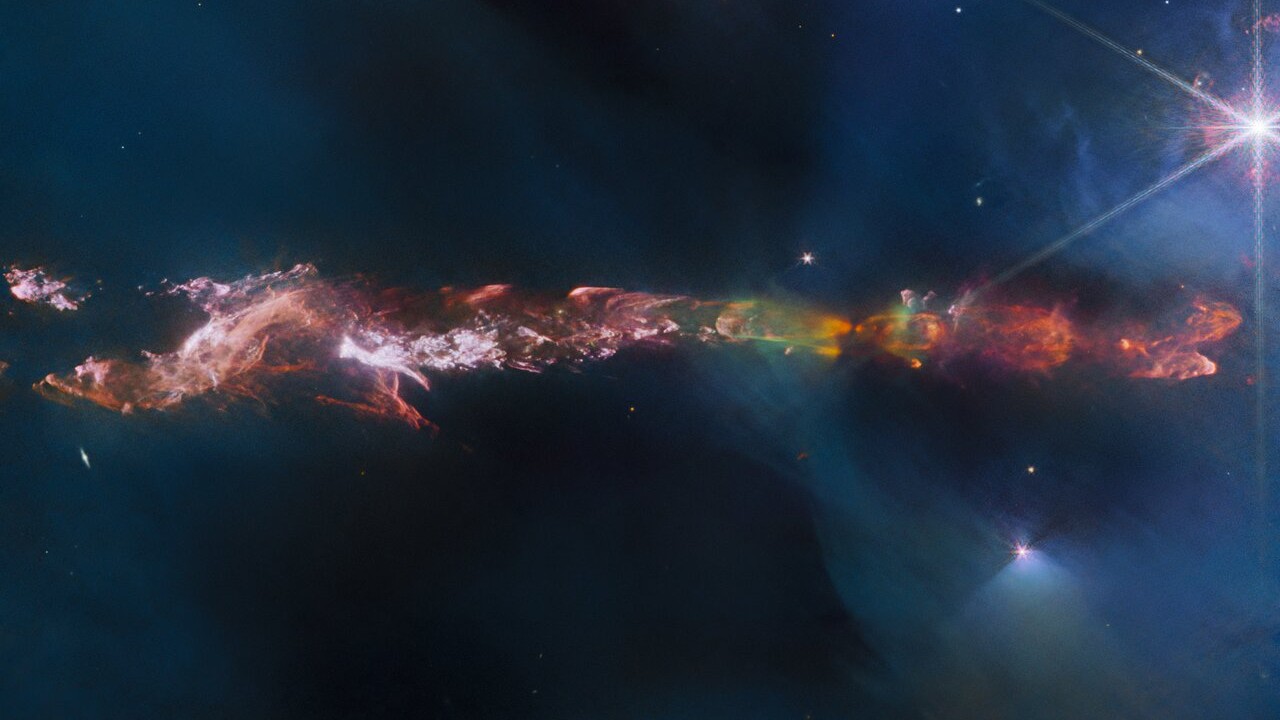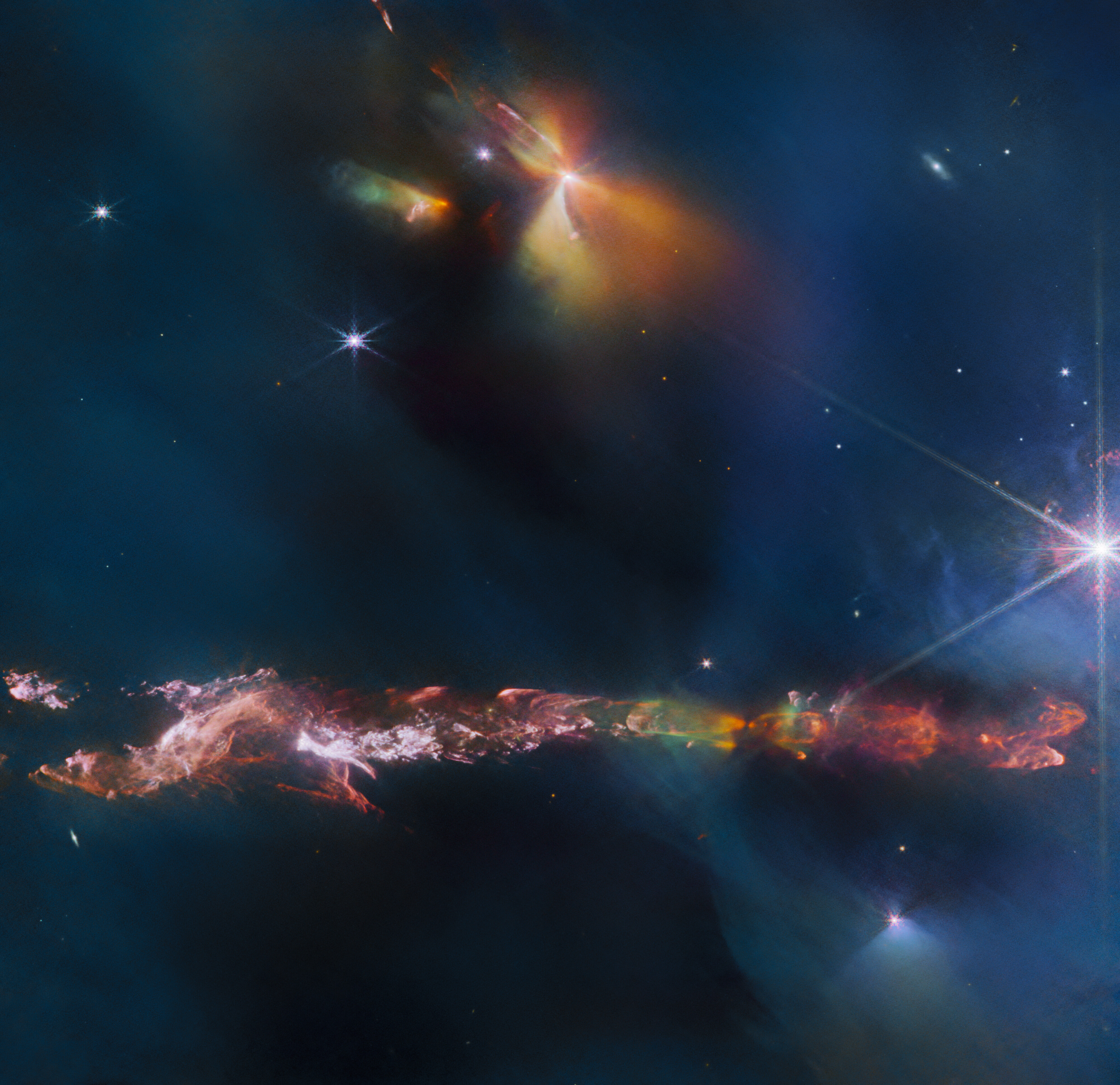
Using the James Webb Space Telescope (JWST), astronomers have observed the luminous cloud of material that surrounds a newborn star, cocooning it in a crib of gas and dust.
These so-called Herbig-Haro objects are created when stellar winds and jets of gas billow from newborn stars, causing shockwaves that slam into the gas and dust from which the star was born at high speeds.
This particular Herbig-Haro object, which can be seen dominating the bottom half of this stunning new JWST image, captured with the telescope's Near-InfraRed Camera (NIRCam) instrument, is designated HH 797. The stellar "cocoon" is located around 1,000 light-years away, close to the young open star cluster IC 348, which itself is situated at the eastern edge of the Perseus dark cloud complex.
Related: Stunning James Webb Space Telescope image shows young star blasting supersonic jets

Infrared instruments like NIRCam are perfect for studying young stars and probing Herbig-Haro objects because these cosmic bodies are often surrounded by remnants of the gas and dust that initially formed them, which absorb and block other wavelengths of light being emitted from these stars.
Infrared light, on the other hand, can shine through these cocoons. By peering into the newborn star with its NIRCam, JWST has revealed molecules that have been heated to thousands of degrees by shock collisions, allowing astronomers to determine the structures of outflows from infant stars.
HH 797 has been studied extensively by ground telescopes, with previous observations showing its gas moving away from Earth, thus having its wavelength stretched or "redshifted" at its south, while gas to the north is being "blueshifted," indicating it is moving toward Earth (the expansion of the universe stretches the wavelengths of the light that is traveling through it, moving it towards the "red," or lower-frequency end of the electromagnetic spectrum). Astronomers also found more gas at the eastern edge of HH 797 is being redshifted than gas at the western edge is.
This variation had been previously attributed to the rotation of the outflow of gas in HH 797. However, the high resolution of the JWST image reveals that what was thought to be outflow is actually two parallel jets, each causing its own series of shocks, which could account for the asymmetries in velocities of gas around HH 797.
The source of these twin outflows is located in a dark hollow at the right of the image. The double nature of the outflows suggests that two stars rather than one are located in this dark bubble.







